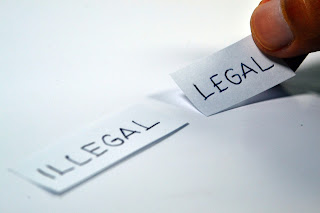Teaching Sermon: Confession & Healing
Today’s teaching sermon is about confession and healing. I want to preface by observing that throughout the gospels, Jesus teaches in word and action, that God’s desire is for our health and wellbeing.* The health and wellness of: our bodies, minds, and spirits; our relationships - with God and one another; and our communities. The Church’s rituals around confession and healing are grounded in this truth, and exist to help us when we are in need of healing and wellness.
Let’s begin by exploring confession. There are really two forms of confession.
Now, there are different ways to think about the ‘sin’ we are confessing. One definition is missing the mark. Another is making choices that separates us from God. Lately, I have been thinking about sin as selfishness - or rather our capacity to be more concerned with our own advantages, pleasures, and well being than our relationships with God, one another, our communities and creation.
We all have the capacity for great acts of generosity and compassion, as well as, the capacity for horrific acts of incomprehensible selfishness. It is a spectrum, and most of us tend to live somewhere in the middle. The general confession, and the subsequent absolution, help followers of Christ to recognize that we are always in need of God’s grace, love, and mercy if we are going to be our healthiest selves.
The second form of confession is one of our tradition’s five sacramental rites, and is known as, Reconciliation of the Penitent. Sometimes, we do things that have really harmed others or caused a fracture in a relationship. This kind of burden tends to stay with us long after the general confession and absolution because our souls are seeking to receive a deeper kind of forgiveness. Our tradition’s approach to this rite is that: all can, some should, none must.* In other words, it is not required.
Scott Gunn and Melody Wilson Shobe describe it this way in their book Walk in Love:
“...reconciliation is an opportunity, a chance to name before God and someone else the things for which we are sorry or ashamed or that burden our conscience. And then in return, we hear from God and from another person the truth that we are forgiven and loved and reconciled.”*
Someone who felt like they wanted to partake in this rite would most likely contact their parish priest - priests and bishops have been empowered to offer absolution - which is when we “declare on behalf of God that a person’s sins are forgiven”.* That said, a lay person may hear a confession, and in lieu of an absolution would offer a declaration of forgiveness.* While there are a few Episcopal Churches with confessional booths, this liturgy is more likely to happen in the church, over zoom, or in the clergy office.
At the heart of it all - the rite of reconciliation is a ritual conversation. It begins with prayer; then the penitent shares what they’re carrying - naming aloud the burdens. Simply naming these things aloud to another, has the capacity to release us from the sense of secrecy or shame we might be feeling. The priest offers counsel, and may even suggest an action as a next step. Not as a punishment, but as an act of gratitude for the reconciliation, or as Scott & Melody write, as an “...outward and visible sign of inward work of forgiveness and reconciliation that is being done by us and God.”* The priest then pronounces absolution on behalf of God, and all one's sins are put away.**
Now, should someone who has committed a crime seek this rite, it could begin, but the priest would withhold offering absolution until the individual had taken responsibility for their actions. It is important to note that the prayerbook says, “The content of a confession is not normally a matter of subsequent discussion. The secrecy of a confession is morally absolute for the confessor, and must under no circumstances be broken.”**
Historically, this rite grew out of the tradition that when a grievous sin brought scandal to the church, one would be excommunicated for a season of penance, and then would be welcomed back and absolved at the Easter Vigil.*** This rite did not become prevalent until the 16th century, and in the Episcopal Church, it has always been one of our lesser known and utilized rites.
Let’s shift gears to talk about healing. There are three primary ways we practice healing; all were modeled by Jesus in his ministry and embraced by the early Church up until today. First, is the practice of offering healing prayers. Second, is the sacramental rite of unction, which means to anoint by pouring or rubbing blessed oil on a person.* Third, is the practice of laying hands on the sick.
We incorporate these practices in a wide variety of ways:
-Each week in the Prayers of the People we pray for a list of people who we know are experiencing some sort of illness in body, mind, or spirit, and would like to be prayed for.
-Our parish, like many others, offers a special time for healing prayers one Sunday a month, where individuals come forward while an ordained or lay person offers prayers for them, and often lays hands on their shoulders, back or head. It is our custom to also offer unction at that time, where the priest will anoint those who are in need of healing with blessed oil.
-Members of our Pastoral Care Team make visitations to folks who are in the hospital, a nursing home, or are homebound and are facing illness or isolation. They will often make a eucharistic visit and offer healing prayers. Molly and I make similar visits, but also spend a fair amount of time meeting with folks who may appear ‘fine’ on the outside, but are facing some sort of emotional, mental, spiritual, physical, relational, or financial stress and are in need of a conversation and healing prayers. I would say that the bulk of my time spent in pastoral care is actually with our lay leaders who are running our mission and ministries. Ensuring they are being well cared for spiritually, so they can continue to be Christ’s hands and feet, leading the ministries of our parish.
-When someone is suddenly facing a serious illness or has been in an accident, they will often call and ask for a priest to come and see them. We tend to bring our oil stock, containing healing oil that has been blessed by the bishop in holy week, so we can offer them the sacramental rite of unction during this time of duress. We press our thumb into the stock, which usually has a piece of a cotton ball, with a bit of oil poured onto it, and then we make the sign of the cross on the individual's forehead.
All those instances aside, the prayer book also offers a special set of prescribed prayers, referred to as ‘Ministration of the Sick’ when a more formal route is appropriate. This includes three parts:
- the ministry of the word - including readings, prayers, and confession of sin;
- laying on of hands and anointing; and
- sharing holy communion
This section also contains a large collection of personal prayers focused on healing.
While we do not often talk about unction as a sacramental rite, it is one.
We often lump unction together with extreme unction or ‘last rites’, which are offered when a person is nearing death.* These brief and beautiful prayers can be said once or many times, as sometimes folks seem close to death and then rally for a while longer. The prayers offered during last rites include an absolution, in order to release an individual of the burdens they may be carrying so they can depart this life. During the prayers, the dying person is anointed with oil. Molly and I tend to use chrism oil for last rites, so as someone departs this life, it is with the smell of the oil from their baptism, marking them as Christ’s own forever.
The rituals of confession and healing are tools meant to help followers of the Way of Love to be healthy, whole, and well. If you are curious about learning more, I’d recommend you take home a Book of Common Prayer - we have some available in the cupboards in the hallway to the office. Take the time to read through the Rite of Reconciliation, Ministration of the Sick, and Ministration at the Time of Death. They each have their own way of communicating God’s desire for our health and wellbeing. If you have more questions - please do not hesitate to ask. I know this was a flyby version!
* Scott Gunn and Melody Wilson Shobe, Walk in Love: Episcopal Beliefs & Practices, pgs 81, 83, 83-84, 85, 85, 87, 89 (in order of reference)
** The 1979 Book of Common Prayer, pg 448, 464 (in order of reference).
*** Marion J. Hatchett, Commentary on the American Prayer Book, 449.




Comments
Post a Comment